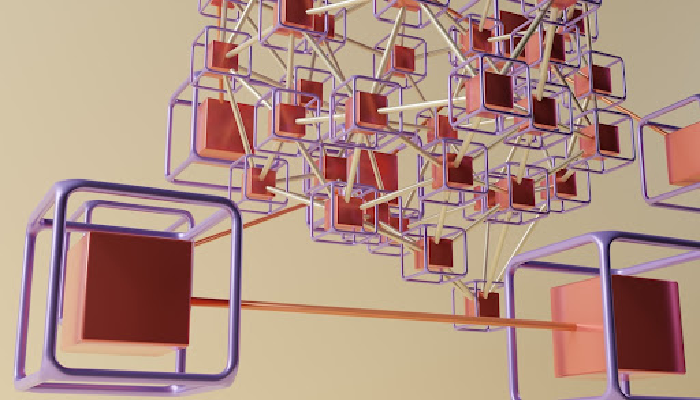In an era where data visualization has become pivotal in conveying complex information, understanding the concept of node diagrams proves extremely useful. These diagrams, laden with nodes and edges, serve as valuable tools in representing various forms of data structuring in diverse fields. But what is a node diagram? Below, we delve into the intricacies of node diagrams, considering their purpose, construction, and interpretation.
Understanding Node Diagrams and Their Core Function
Alt text: An artistic representation of a node diagram featuring orange and purple nodes connected by orange lines.
Node diagrams, also known as graph diagrams, are a form of visualization that represents the relationships between different entities in a system. Each entity or “node” is connected to other nodes by lines, known as “edges”. This connection signifies a relationship or interaction between the connected nodes.
Nodes and edges are the fundamental components of these diagrams. The placement and connection of these elements define the structure and hierarchy within the system represented.
Node diagrams are widely used in fields such as information technology, biology, social sciences, economics, and traffic systems, where they serve to illustrate complex networks, decision trees, and routing processes, among other things.
Understanding node diagrams fastens the process of making informed decisions based on clear and concise data representation. They function to simplify complexity, thus enhancing the clarity of understanding and interpretation of intricate data.
How Node Diagrams Contribute to Visualization
In the realm of data visualization, node diagrams play a crucial role. They allow the translation of complex qualitative and quantitative information into a more understandable format, thereby facilitating effective communication.
Through nodes and edges, these diagrams provide a visual representation of relationships, allowing analysts to spot patterns, trends, and insights that may get lost in a sea of text-based data.
They serve as a graphical roadmap to interpret complex data systems, making them an invaluable tool in creating visualizations for large datasets.
The use of color, size, and shape customization for nodes and edges, further enhances the comprehensibility of these diagrams, thus promoting efficient data analysis and decision-making.
Essential Components of a Node Diagram

The components or building blocks of a node diagram are nodes and edges. Nodes represent the entities or data points in a system. They can take on various forms and can be customized based on the data they represent.
The edges are the lines that connect nodes to each other, signifying a relationship or interaction between the entities. Depending on the data representation, edges can be directed or undirected, weighted or unweighted.
Additionally, the distance between the nodes or the length of the edges can also be significant in some cases. The direction or flow of data, denoted by arrows, is another critical component in defining the relationship between the nodes.
Understanding these fundamental components is essential in creating, reading, and interpreting a node diagram effectively.
The Process of Creating a Node Diagram
Creating a node diagram begins with identifying the nodes or entities of the system. These nodes should represent distinct data points or entities within the system being represented.
Next, determining the relationships or interactions between these nodes is paramount. This step involves figuring out which nodes connect with which, which forms the basis for creating the edges between these nodes.
The placement of these nodes and edges on the diagram is carried out based on the hierarchy or the magnitude of the interaction between these entities. Advanced software tools can further enhance this step by allowing customization of the color, size, and shape of these components.
Finally, the diagram undergoes a review to ensure an accurate representation of the system. This step involves checking and refining the diagram until it effectively communicates the underlying data or system.
Altogether, node diagrams hold a significant value in today’s data-driven world. Having a firm understanding of these diagrams aids not only in decision-making but also in presenting complex data in a comprehensible manner. So whether you’re in IT, project management, social sciences, or just a curious mind, getting familiar with node diagrams can yield immense benefits.
